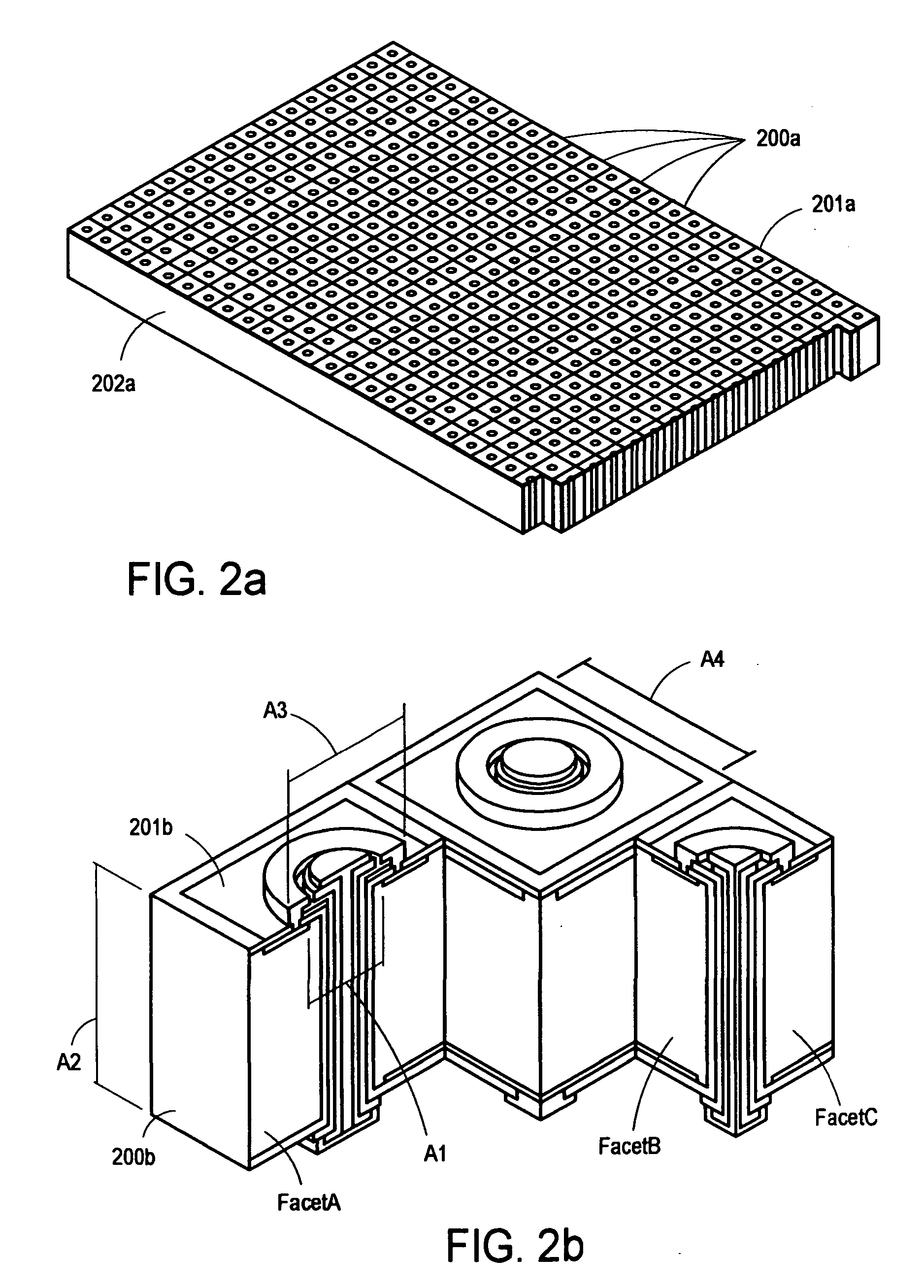Front illuminated back side contact thin wafer detectors
a detector and front-side contact technology, applied in the field of radiation detectors, can solve the problems of adversely affecting the performance of detectors, transistors and integrated circuits, and detectors showing an increased reverse-bias current, and achieve the effects of reducing radiation damage susceptibility, reducing cross-talk effects, and increasing flexibility in application
- Summary
- Abstract
- Description
- Claims
- Application Information
AI Technical Summary
Benefits of technology
Problems solved by technology
Method used
Image
Examples
Embodiment Construction
[0037] The present invention is directed toward a detector structure, detector arrays, a method of detecting incident radiation, and a method of manufacturing the detectors. The present invention comprises several embodiments that provide for reduced radiation damage susceptibility, decreased affects of cross-talk, and increased flexibility in application. Various modifications to the disclosed embodiments will be readily apparent to those of ordinary skill in the art, and the disclosure set forth herein may be applicable to other embodiments and applications without departing from the spirit and scope of the present invention and the claims hereto appended. Thus, the present invention is not intended to be limited to the embodiments described, but is to be accorded the broadest scope consistent with the disclosure set forth herein.
[0038] In one embodiment, the present invention comprises a plurality of front side illuminated photodiodes, optionally organized in the form of an arra...
PUM
 Login to View More
Login to View More Abstract
Description
Claims
Application Information
 Login to View More
Login to View More - R&D
- Intellectual Property
- Life Sciences
- Materials
- Tech Scout
- Unparalleled Data Quality
- Higher Quality Content
- 60% Fewer Hallucinations
Browse by: Latest US Patents, China's latest patents, Technical Efficacy Thesaurus, Application Domain, Technology Topic, Popular Technical Reports.
© 2025 PatSnap. All rights reserved.Legal|Privacy policy|Modern Slavery Act Transparency Statement|Sitemap|About US| Contact US: help@patsnap.com



